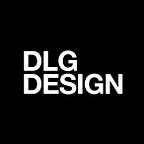Smart cars will need smart insurance
In September, just ahead of the arrival of Hurricane Irma in Florida, Tesla rolled out an over-the-air software update for some of its Model S and X cars.
The free update didn’t add a new system interface or make changes to the sat nav.
What it did was enable owners to tap into the full capacity of their car’s battery. You see, the battery had been software limited based on the owner’s chosen specification.
The increase to 75 kilowatts, up from 60 or 70KW, enabled up to 40 more miles of travel before needing to recharge. The ability to drive further could have proven vital for those Floridians trying to escape Irma’s devastation.
Newly-sold Tesla cars no longer artificially limit the battery capacity, but this kind of software-triggered hardware upgrade could be part of our connected car future.
IBM has for years been selling a line of servers which, via a software switch, are upgradable with additional processors and more memory.
There’s no wizardry involved, just a smart system of creating servers with the same base hardware, then enabling access to specific components via software. Customers using IBM’s Capacity on Demand servers can pay for upgrades on either a temporary or permanent basis.
Additional power on demand is something Tesla offers with its P100D Model S equipped with the optional hardware-based Ludicrous Acceleration Mode. A recent firmware update provided drivers with the ability to enable an even quicker Ludicrous Plus Mode. Once activated there’s the promise of around an extra 35 horsepower.
Traditionally, car modifications must be declared so as not to invalidate motor insurance policies. Tesla’s software-based upgrade, therefore, falls into an insurance grey area.
Tesla has said it wants to sell an all-in-one package which bundles together the cost of the car, maintenance and insurance. Trials have already begun in Asia.
During the company’s fourth-quarter 2016 earnings call held in February, Jon McNeill, Tesla’s president of sales and services, revealed it’s a sales model which could become the standard.
“It takes into account not only the Autopilot safety features but also the maintenance cost of the car,” McNeill said. “It’s our vision in the future we could offer a single price for the car, maintenance, and insurance.”
You’d imagine this all-in-one offering would accommodate official software upgrades which result in increased power. But what happens when software-based upgrades begin to appear in the likes of Ford, VW and Vauxhall cars which fill our road network?
Blockchain could enable a system by which contracts are instantly exchanged between driver and insurance firm.
Your Ford Focus doesn’t need much power when pootling around town at weekends, but it might need a little more oomph during the week for commuting.
Technology could progress to the point where the ability exists to turn extra power on and off, meaning you’re driving what could be regarded as two different cars.
And different cars need different insurance.
The solution to this smart car conundrum could come in the form of Blockchain, a secure digital ledger system which forms the basis of the successful cryptocurrency Bitcoin.
In simple terms, Blockchain provides a permanent and unchangeable record, which is great when you want secure digital contracts.
Blockchain could enable a system by which contracts are instantly exchanged between driver and insurance firm — and possibly automatically by the car — when making a car modification.
If you enable a software mod which makes your car faster, the insurance premium will be updated to reflect the added risk. The policy can revert once the speed boost is switched off.
Similarly, when autonomous cars become mainstream, there are likely to be drivers who still wish to drive. An insurance policy will be required to adapt to accommodate a car that will sometimes drive itself, but at others be controlled by a human.
Imagine a scenario in which a driver wants to take a break. On the driver’s command, the car could switch to a self-driving mode and update the insurance policy at the same time.
It could work so transparently that you get a bill each month outlining your usage — much like a phone bill.
The cars we drive are changing, and there’s no doubt insurance will need to evolve with them.
